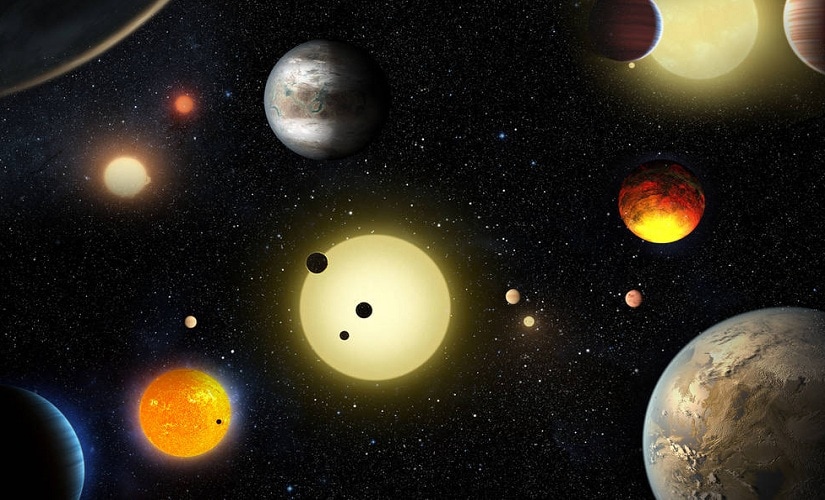There’s good news for aspiring space tourists. Nasa’s Kepler Space Telescope has recently discovered potential habitable planets, reports Space.com. The Kepler space telescope has spotted four rocky alien planets that orbit the same star — two of the four might just be capable of supporting life, the website adds. These planets — which orbit a star outside the solar system — are known as exoplanets. Nasa’s website features a great exoplanets explainer, which is a good start to get yourself up-to-date on the subject. The first confirmation of an exoplanet orbiting a star (or a sun-like star) was in 1995 — the planet was a hot gas giant supposed to be half the size of Jupiter. It reportedly, Nasa tells us, tugged hard on its parent star — that the ‘wobbling’ was obvious to telescopes that were present on Earth. [caption id=“attachment_2916098” align=“alignnone” width=“825”]  An artist’s concept of select planetary discoveries made by NASA’s Kepler space telescope. Photo: Nasa[/caption] Space.com writes that the four recently-discovered exoplanets circle a red dwarf — the smallest type of hydrogen-burning star, according to Encyclopaedia Britannica — called K2-72, which is 181 light years from the Earth in the Aquarius constellation. All the four planets are wider than the Earth (20 percent to 50 percent), which apparently make them rocky. (Note: This is good news because the planets are not large diffusive gas giants like Jupiter, which cannot harbour human life.) Before these four planets, Nasa’s K2 mission also discovered (quite recently) more than 100 new exoplanets. The planet-hunting telescope, according to Wired, confirmed the presence of 104 planets orbiting stars outside the solar system; hence exoplanets. It further explains that the Kepler telescope finds planets by measuring flickers from when the planets pass in front or tug the star. The Kepler Mission was initiated to discover Earth-sized planets or those that are habitable, where liquid water and possible life might exist. Launched in 2009, Kepler was the first NASA mission to find potentially habitable Earth-size planets. Initially, Kepler surveyed just a patch of sky in the northern hemisphere and determined the frequency of planets orbiting sun-like stars, whose size and temperature are similar to Earth. In it’s extended mission in 2013, the spacecraft lost the ability to stare exactly at the target area. It received a new lease of life when engineers used the pressure of sunlight to stabilise so that “it could continue to do science”, as Nasa puts it. The fix gave the mission more opportunities in astrophysics research — it chalked up hundreds of discoveries; more than three dozen exoplanets with more than 250 waiting for confirmation. How do scientists validate the planets identified by K2? The researchers take high-res images of the stars as well as something called high-resolution optical spectroscopy, which is nothing but the study of how matter interacts with light. They then disperse the light from the star through a prism and using spectrographs (instruments that separate light into a frequency spectrum) infer the physical properties of the star such as mass, radius and temperature, from which one can obtain the properties of the exoplanet.
The Kepler space telescope has spotted four rocky alien planets that orbit the same star — two of the four might just be capable of supporting life, the website adds.
Advertisement
End of Article


)
)
)
)
)
)
)
)
)



